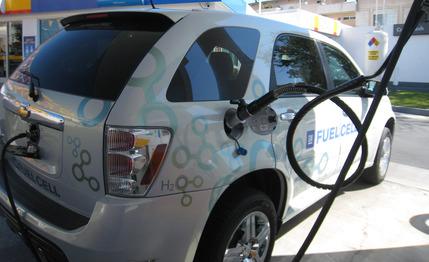
Introduction:
Energy produced from the natural resources like sunlight, wind, rain, tides and geothermal heat, which are renewable (naturally replenished), are called as Renewable energy. It substitutes conventional fuels in four distinct areas including electricity generation, hot water/space heating, motor fuels, and rural (off-grid) energy services.
In today’s world, Renewable energy technologies are very important as they are the clean sources of energy which have a much lower environmental impact than conventional energy technologies.
Types:
Renewable energy is available in different forms such as solar power, wind power, hydroelectricity/micro hydro, biomass, Hydrogen and fuel cells, Geothermal power, and biofuels for transportation. These are mostly depends on sunlight or solar energy.

Solar Power: The energy produced or collected direct from the sunlight is called as solar energy. It can be used directly for heating and lighting homes and other buildings, as well as for hot water heating, solar cooling, and a variety of commercial and industrial uses.
It is exploited using different ever-evolving technologies including solar heating, photovoltaic, concentrated solar power, solar architecture and artificial photosynthesis.
In 2013, solar was the second-largest source of new electricity generating capacity in the U.S. Photovoltaic (PV) installations continued to proliferate, increasing 41% over 2012 to reach 4,751 MWdc, and 410 Mwac of concentrating solar power (CSP) plants also came online.

Wind Power: The energy drive from the winds through the use of wind turbines, situated over large areas having higher wind resources, such as offshore. This energy is mostly used to pump water or generate electricity and has become the most common for commercial use.
There were more U.S. wind power megawatts (MW) under construction as the year (2014) started for the first time in history. In the Q4 more than 10,900 MW started construction activity, and more than 12,000 MW are currently under construction.

Hydroelectric Energy: The energy captured by exploiting water, which is around 800 times denser than air and enable to produce considerable amounts of energy. Hydroelectric energy is a term mainly preserved for large-scale hydroelectric dams.
There are two forms of hydropower namely Wave power that captures the energy of ocean surface waves, and tidal power, which converts energy of tides.
In the United States, Hydropower is the largest source of renewable electricity, responsible for over half of all renewable electricity generation last year and 7% of total generation.

Biomass: The organic matter that helps plants to grow is known as biomass, which can be use to generate electricity, transportation fuels, or chemicals.
As an energy source, biomass can either be used directly via combustion to produce heat, or indirectly after converting it to various forms of biofuel. The modern forms of biomass energy are methane generation and production of alcohol for automobile fuel and fueling electric power plants.
The biomass used for electricity generation differs from region to region. In the United States, Forest by-products, such as wood residues, are common.
In recent years, the biomass power sector has gone through a significant growth. Last year, it saws completions of several large-scale projects which added up to over 750 megawatts (MW), meeting the power demands of hundreds of thousands of homes and businesses.

Hydrogen-Fuel-Cell-Vehicle
Hydrogen and fuel cells: Hydrogen is not a natural gas, however it is the most abundant element on the Earth. It can also be found in many organic compounds, as well as water. The hydrogen can be used in fuel cells, which are similar to batteries, to power an electric motor.

Geothermal-Power-Process
Geothermal power: Geothermal energy is collected from the Earth’s internal heat for various uses such as electric power production, and the heating and cooling of buildings. It is unlike other renewable energy resources which drive from the sun.
The United States’ installed geothermal power capacity around 3,442 megawatts (MW) in early 2014.
Other types of energy: Energy from tides, the oceans and hot hydrogen fusion are the other types of energy, which can be used to generate electricity.
The renewable energy will account for about one-third of new electricity generation added to the U.S. grid in the next 3-year.
Jobs and the Economy:
In the United States, most renewable energy investments are spent on materials and workmanship to build and maintain the facilities, rather than on costly energy imports, generating more jobs in the country.
On the other hand, the renewable energy technologies developed and built in the United States are being sold overseas, boosting the US economy.
US Renewable Energy Market Scope :
At present, Americans are mostly adopting renewable energy as a technology of choice, accounting for around 40% of all new, domestic power capacity installed in 2013.
In the Q4 of 2013, most activity with 1,012.4 MW completed across Kansas, California, Michigan, Texas, New York, Nebraska, Iowa, Colorado, Massachusetts, and Indiana.
Besides this, on-shore projects are now under construction in at least 20 states.
As per the current reports, renewable power capacity surpasses 190 GW and biofuels are contributing nearly 10% of US fuel supply, and renewable thermal energy systems heat and cool a growing number of homes, businesses, public buildings, and other structures countrywide.
The United States saw growth in the Renewable energy markets over the H1 of 2014. All sectors including wind, solar, and geothermal energy were on the rise and is anticipated to see 26% overall growth in the US over 2014.
Presently, approximately 17,000 megawatts (MW) of these three energy sources are under construction.
Future estimation:
It is also estimated that the average growth of Hydropower sector would be raised by 52%, Solar PV 25%, Wind 34%, Biomass 83%, Geothermal 92% in the US by 2018.
Tendersinfo.com with a team of experts offer assistance to companies from the earliest stages of expansion strategy. It helps companies offering consulting services and information about the latest contracts, projects and tenders in the country and worldwide.
For More Detail About Business Opportunities in Renewable energy Sector visit www.tendersinfo.com
By Jahara Khan (jahara@tendersinfo.com)
Sr. Copy Editor (Content & Research) – Tendersinfo